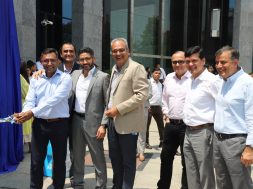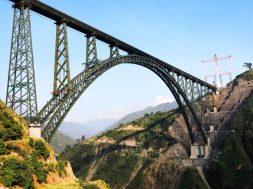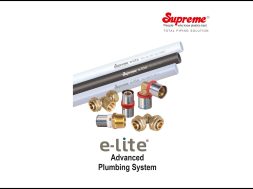Precast: expedite construction of transport projects

Alleviating woes of traffic congestion, delays and interruptions, the technology has emerged as industry’s preferred choice for construction.
With faster completion of civil engineering mega projects, precast concrete technology has drawn greater interest from the Indian construction industry over the past decade. The precast concrete technology is now visible in almost all areas such as residential multi story structures, metro rail structures and in road construction.
Precast elements in the structural design
Major advantages of precast
Precast concrete technology is becoming popular among construction companies, as project completion schedules can be squeezed and return on investment (ROI) will be much quicker. Main advantage of precast concrete over cast-in-situ are, precast panels or elements can be cast and cured in a controlled environment at a precast plant, providing greater control over consistency of the concrete mix, procedures of vibration and proper curing. K Rajarama Rao, Chief General Manager – Materials, NCC Ltd says, “Precast objects reduce or eliminate curling, strength and air-entrainment problems that are common with conventional concrete methods.”
Enhancing precast technology
Catering to urban India’s needs of transportation, new metro systems are currently under construction and bringing about vast changes in 15 plus cities all over the country at a breathtaking pace. India is well on its way to bring a shift from private modes of conveyance to public transport. Kapilesh Bhate, CPCO, Precast India Infrastructures Pvt Ltd, says, “Attempts are being made to enhance technology. Precast construction can thus well serve these aspects effectively.”
In metro lines and stations, following precast elements have already been tapped such as viaduct segments, I girders, plank slabs and viaduct wall. However scope lies in tapping the following element types in precast in metro infrastructure viz. pier arms, pier segments, double t, columns, pre-stressed beams, staircases, lift walls and hollow core slabs
Preferred choice
Seamless construction
The technology is very versatile and equally suitable to all types of construction. The advantages in adopting this technology are structural stability, speedy and quality construction, flexibility, wastage control and less manpower requirement. Rao from NCC says, “The use of precast technology helps in saving up to 64 per cent of the time taken for similar projects using normal construction methods.”
All major cities in India are coming up with metro rail projects to come over ever increasing traffic. Naturally, metro rail corridors run along existing roads, which makes construction very difficult. The precast technology came to their rescue in uninterrupted construction and very less inconvenience to commuters. The metro rail runs under ground and above ground depending upon the topography of the area. Underground tunnel lining is being done with precast elements. Above ground viaduct, stations are also made with precast elements.
Off-site quality assurance
Bhate from Precast India believes, “Precast concrete is an age-old and age-tested methodology of construction all over the world. After a quiet start few decades ago, slowly, people are again exploring this option.”
If a core developer is getting his leasable or saleable product in 40-50 per cent of the time (compared to conventional cast-in-situ), his inbound cash flow can start that much earlier (once, and provided, the finishing works are done with equal pace, coordination and intensity). The amount of early cash flow may come back in tunes of crores depending on the lease or sale rate per sq.ft. having other interest saving effects in the overall project finances in totality. Same applies for production facilities in urgent need to start production and supply (sale). The quality control is possible in a manufacturing environment as opposed to site concreting.
Low -level disruption to the traffic
Precast pre-stressed concrete technology brings unmatchable durability for the newly constructed road pavements and bridges with the lowest level of disruption to the traffic during its implementation therefore it is gaining grip in the India infrastructure and construction sector. Pankaj Udeshi, Asst. General Manager Procurement, Supreme Infrastructure India Ltd said, “The precast technology is applicable and needed for both – replacement or rehabilitation of existing bridges and construction of the new ones.”
Fast track construction
Utilising rapid construction
Udeshi says, “Traffic volumes continue to rise in the Indian highway infrastructure, its users increase their demands regarding its comfort and quality.” As capacities of the construction industry are limited, utilisation of rapid construction methods is becoming necessity. Prefabrication, respectively precasting seems to offer all that is needed in current situation.
Precast concrete pavement technology
Congestion and traffic delays from roadway construction as major sources of frustration for motorists. Traffic congestion also reduces highway capacity and increases delay costs for the travelling public. Public agencies are challenged to find ways to restore high-volume roadways rapidly with minimal impact to motorists and durable long-lasting repairs. Particularly in high-density urban areas, precast concrete pavement technology offers several advantages over traditional cast-in-place construction methods.
Precast objects are also being both pre-stressed during their plant production and post-tensioned during installation, which is not possible for the cast-in-situ approach. Rao says, “Pre-stressing in the plant significantly improves performance by inducing compressive stresses in the panels. This durability not only slashes maintenance cost over the life of the roadway but significantly cuts cost through the reduction of the repair cycles.”
• Modular panels make the construction process safer and more efficient because roadwork can be completed during off-peak hours in windows as short as five hours, reducing the need for time-consuming roadway closures.
• As they are precast, the panels can be fabricated under environmentally-controlled conditions, which can result in products with better engineering properties.
• Workers develop skill and knowledge that improves productivity and quality.
• Precast concrete panels can ease congestion at busy intersections and are a good choice for ramps and other locations where heavy traffic presents a challenge during construction.
• Using the panels can extend the construction season because prefabrication eliminates the need to pour concrete in cold-weather conditions.
• Less frequent maintenance.
• Higher economical effectiveness due to mass production of all standardised elements (mainly pavement panels and curb elements etc.)
Use of precast technology helps in saving up to 64 per cent of the time taken for similar projects using normal construction methods.
K Rajarama Rao, Chief General Manager – Materials, NCC Ltd
Precast concrete is an age-old and age-tested methodology of construction all over the world. After a quiet start few decades ago, slowly, people are again exploring this option.
Kapilesh Bhate, CPCO, Precast India Infrastructures Pvt Ltd
Precast technology is applicable and needed for both – replacement or rehabilitation of existing bridges and construction of the new ones.
Pankaj Udeshi, Asst. General Manager Procurement, Supreme Infrastructure India Ltd
Cookie Consent
We use cookies to personalize your experience. By continuing to visit this website you agree to our Terms & Conditions, Privacy Policy and Cookie Policy.









